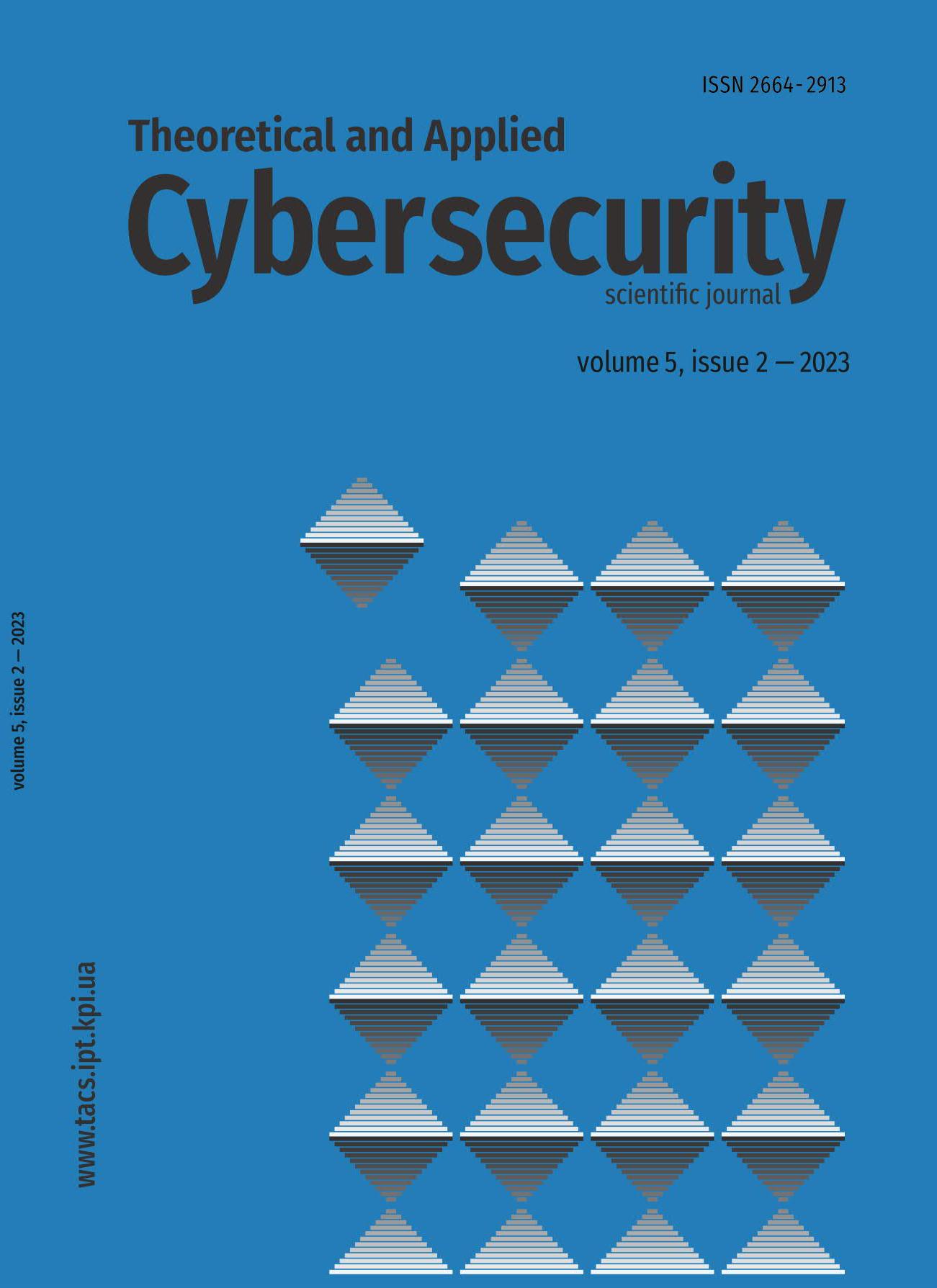The Best Scenario of Cyber Attack Selecting on the Information and Communication System Based on the Logical and Probabilistic Method
DOI:
https://doi.org/10.20535/tacs.2664-29132023.2.288973Abstract
Abstract
The task of analyzing and selecting the best scenario of a cyberattack on information and communication system is considered as a component of the task of analyzing systems security. A method and corresponding algorithm for finding the best scenario of an attack on information and communication system using a logical and probabilistic model is proposed. The model describes the development of adverse events that arise in the information and communication system from the implementation of possible attacks on the security system from cyberspace. Analysis of cyber attack scenarios allows predicting the development of possible adverse cyber security events from the implementation of multiple threats to the system. The developed method and corresponding algorithm for analyzing attack scenarios can be used to analyze the security of information and communication systems, as well as in automation systems for designing information security systems or designing attacks on such systems.
Downloads
Published
Issue
Section
License
Authors who publish with this journal agree to the following terms:
Authors retain copyright and grant the journal right of first publication with the work simultaneously licensed under a Creative Commons Attribution License that allows others to share the work with an acknowledgement of the work's authorship and initial publication in this journal.
Authors are able to enter into separate, additional contractual arrangements for the non-exclusive distribution of the journal's published version of the work (e.g., post it to an institutional repository or publish it in a book), with an acknowledgement of its initial publication in this journal.
- Authors are permitted and encouraged to post their work online (e.g., in institutional repositories or on their website) prior to and during the submission process, as it can lead to productive exchanges, as well as earlier and greater citation of published work (See The Effect of Open Access).

